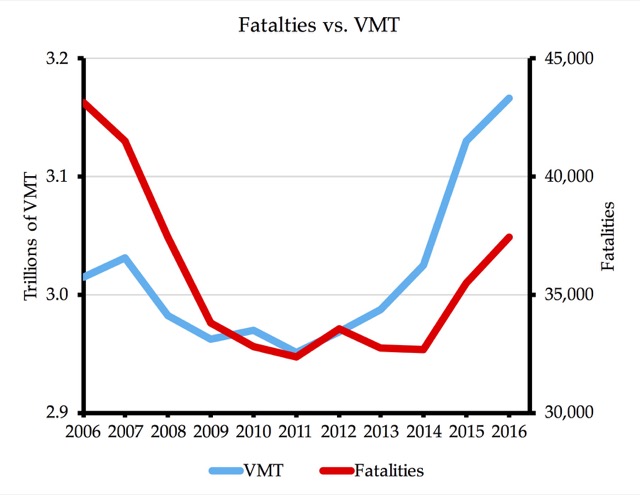Highway subsidies averaged 1.7 cents per passenger mile in 2016, an increase from 1.2 cents in 2015. The increase was due to a massive infusion of general funds into the federal Highway Trust Fund, which was necessary because Congress doesn’t know how to keep spending within its revenues.
This calculation was based on table HF-10 for the 2016 Highway Statistics, which the Federal Highway Administration finally released last week. (The table is dated August 2018, but I check regularly and it hadn’t appeared before last week.) This table shows where highway money comes from, and in 2016 $118 billion came from general fund appropriations and other taxes such as income or property taxes. To calculate subsidies, I deduct from this the diversions of gas taxes and other highway user fees to mass transit and other non-highway uses, which in 2016 totaled to $33 billion.
The result is a net subsidy of $85 billion, up from $59 billion in 2015. The 2015 table shows that 97 percent of the subsidy in that year was at the local level, which is typical of most years. But in 2016, more than half the subsidy was at the federal level. The states, meanwhile, actually diverted nearly $6 billion more from highway user fees than they spent out of general funds. Continue reading








